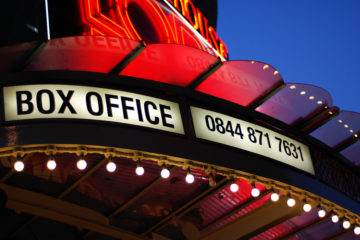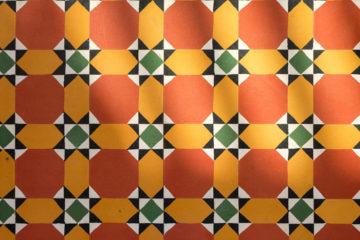Finding Clues with an Escape Room: Solving Puzzles to increase your business
The door is locked. The room is foreign, and full of strange objects. You know there are clues hidden somewhere but everything looks unique and generic at the same time. The clock counts down. Does the picture on the wall have meaning or is it just a picture? Does the piece of paper provide clues or is it just a distraction? The clock continues to countdown. Cortisol shoots through your veins. Excitement is building. Will these clues lead you to your ultimate goal or just to a dead-end?
Playing in an escape room can have a lot of similarities to running a business. In an escape room you are trying to cut through McGuffins and red herrings to find clues and indicators to help you reach your goal- which is escaping a room. In a business you are trying to cut through McGuffins and red herrings to find clues and indicators to help you reach your goal- which is serving your clients and thereby increasing your business.
Setting the Scene
I love escape rooms. It could be because of my love of theme parks and immersive storytelling. I love being part of the story and playing a role in it. When I had an opportunity to help my friends at the local Waxhaw Escape Room, I jumped at the opportunity.
Like many businesses they were looking at how to get more people to buy their product. In this case, the product is a block of time or a reservation. At the time they had three rooms, one was a VR room to help train candidates in case there is ever a zombie apocalypse, this allows 2-3 people at a time. The other two are the traditional escape rooms we are familiar with, allowing anywhere from 2-8 people in a room at one time.
The Conflict
The owner told me to think of the escape room just like a movie theater. Regardless of how many people book, 2 or 8, the room still needs to be played (they won’t turn people away for a minimum amount of players; any occupancy is better than no occupancy).
With the VR rooms scheduled every hour, and the escape rooms scheduled every 1.5 hours, the main goal is not to necessarily increase profits, this is the first red-herring. Instead we need to look at how to increase bodies and bookings.
Looking for Clues
Walking into an escape room you assemble all the clues you can. All clues in front of you allows them to be at your disposal and judge their worth without having to continually look for more clues while solving.
Working with the owner, they had a lot of clues, or data, to gather together. They were using social media and running ads on them, so Facebook and Instagram data was needed. They had a website and a booking cloud software they used. They also used Google Analytics for their site and Google Ads to increase traffic.
Finally they utilized a cool tool called Fotaflo, which takes pictures and videos of their guests at the Escape room and sends it to them after they get home. This allows the guests to then share their experience with friends and family and give them a discount at the time of booking.
One clue leads to another
With so many clues it can be hard to understand what is useful and what is not. When looking at data we need to remember there are three things we can do with it (describe, predict, prescribe). First, to understand the benefits of all the clues, we started to describe it.
We looked at all games in aggregate and individually, analyzed how profitable each game was, and how much they were booked proportional to time slots available.
We looked at trends of social media activity and website traffic compared to our ultimate goal of bookings. Time was also taken describing the Google Ads and their relationship to profits.
What we found was intriguing:
First, we found the popularity of each room (high bookings) was directly correlated to how they advertised on their website. The layout of their site is ‘Alice’s Dream’, then ‘Train to Nowhere’, and finally as you scroll to the bottom, the ‘VR Games’.
Second, since our goal is to increase bookings we had to understand how much time existed between booking and actually playing the games. Understanding this helps us know how early we need to advertise to get people to book. Their reservation system showed us that a majority of their rooms are booked within 3 days. In fact, 72% happen within an 80 hour turnaround time; 61% of those bookings within 3.5 hours!
Due to new privacy technology (think iPhone not allowing businesses to track your data), it is nearly impossible to track a user from social media advertising to actual purchases. So we took this time difference to be an indicator as a few things, accepting the assumptions:
- The Escape Room is a just-in-time event for customers. Meaning people weren’t planning weeks or months out to attend. When someone wants to go to an escape room they want to do it the same day or next.
- Since it is a just-in-time event, the advertising they see on a particular day is what contributes to their booking.
These two clues were monumental as it allowed us to then use data to predict potential bookings.
Solving the puzzles to complete the story
As you find and solve clues in an escape room, the story helps drive you each step of the way. Escaping the room solves the puzzle but also completes the story, or at least the part of the story you are focusing on.
Using predictive analysis we combined all their data, from their reservation system to the Google Ads they were running. Feeding all that data into the machine yields 2 things:
- A way for us to predict how many bookings they will get in the future based on anticipated events.
- Probably more helpful, what is and is not meaningful in terms of contributing to bookings
The second aspect of the predictive analysis is where we focused our attention, to better help us plan for and get future bookings. Out of all the data we fed to the machine, 2 key points came out: the highest contributing factor and the lowest.
Highest Contributing Factor
Out of all the data points, it was their website which contributed the most to understanding their occupancy. All aspects of it including, but not limited to: ‘Time on Page’ (the amount of time spent on the page) to ‘Search Depth’ (the average number of pages visited after a search).
Website traffic makes sense since that is how a customer books but what was interesting was the polarity of each value. The ‘Time on Page’ was positive, meaning the more time spent, the more occupancy they saw. While the page depth was negative.
With these associated contributing factors, my recommendation was to ensure their website is clean and easy to navigate. Any changes or future enhancements needs to be kept in mind: the more pages a customer has to visit = less occupancy.
Lowest Contributing Factor: What wasn’t seen
Just as interesting as the clues we did see, were clues we didn’t see. We didn’t see any indication of Google Ads being a significant contributing factor to their bookings; it was neither a good nor a bad factor.
As a result, my recommendation to them was to stop using Google Ads for a few months and test out if it affects their bookings and occupancy.
The End?
After completing an Escape Room, you may have completed that storyline but the characters and mythology live on to be discovered in the next iteration.
Likewise with this project. There are many more avenues and opportunities to look at to help the Escape Room, and help them serve their customers. Things like: predicting the most engaging social media posts, profiling customers, crafting a game recommendation system, and much more.
Key Takeaways:
- The results of this analysis are not prescriptive to other businesses, or even the Escape Room at another time. Data points, such as Google Ads, might be beneficial to other businesses at the same time or even to this escape room in the future.
- Defining a problem is the best way to start solving a problem. Data can help answer any question a business has, and it can usually be answered with data the business already owns.
- Data analysis provides direction. It can show what is important and what should be focused on. This provides flexibility and creativity to the business which can then be used to figure out how to accomplish a goal.

What puzzles could you solve with your data?
Contact me to set up a 15min. call
Follow Up
After two months I followed up with the owner to see how business was going. He relayed he paused all the money he was spending on Google Ads; which was a substantial part of his budget. And his occupancy?
“I haven’t noticed any negative effects!”


